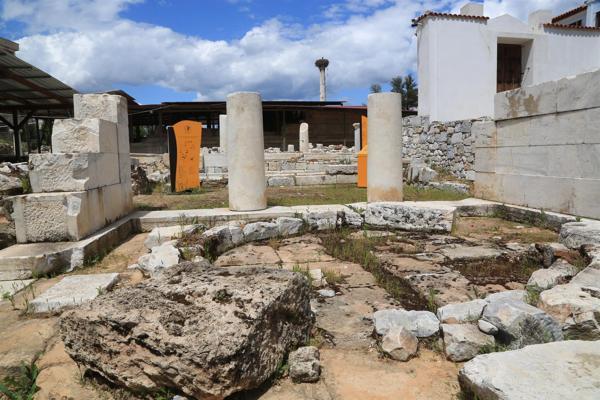Special protection for Caria Satrap
MUĞLA


The Uzunyuva Monumental Tomb Archaeology Park in the western province of Muğla’s Milas district, home to the tomb of Caria Satrap Hecatomnus, now is now open to tourists after restoration work.
The 2,400-year-old Mausoleum of Hecatomnus, a member of the UNESCO World Heritage Tentative List, is protected with a special air-conditioning system that controls temperature and humidity levels inside the tomb.
The tomb, one of the most important artifacts unearthed in Milas in the last century, and the Uzunyuva Monumental Tomb Archaeology Park were opened to tourism after the completion of restoration work.
The sacred area of the tomb of Caria Satrap Hecatomnus, which was discovered in 2010 when it was robbed, and the wall paintings, are now an open air museum.
Milas District Governor Eren Arslan said that meticulous work was carried out to protect the tomb, which sustained extensive damage during the robbery.
Arslan said that scientists set up a special air-conditioning system inside the tomb.
“A special study has been carried out for many years in order to transfer the tomb chamber, which has ornamental walls decorated with golden ornaments, and the sarcophagus to the next generations. The temperature and humidity of the tomb chamber are fixed and maintained regularly,” he said.
Arslan said that the historical and cultural value of the Uzunyuva Monumental Tomb Archaeology Park is helping to attract tourism of the country.
The tomb, located 18 meters below the ground, and wall paintings there shed light on the history of the period, he said.
The Mausoleum of Hecatomnus, dated to the early 4th century B.C., is located on Hisarbaşı Hill in Milas. Although the monument had been defined in various earlier studies as a temple, recent research has proven that it is a mausoleum, similar to the Mausoleum at Halicarnassus, according to the UNESCO website.
According to UNESCO, the mausoleum certainly belonged to Hecatomnus and his family. He was a provincial governor known as a satrap who ruled Caria for the Persian Achaemenid king Artaxerxes II.
The reliefs on the sarcophagus and the iconography of the wall paintings also support the argument.
